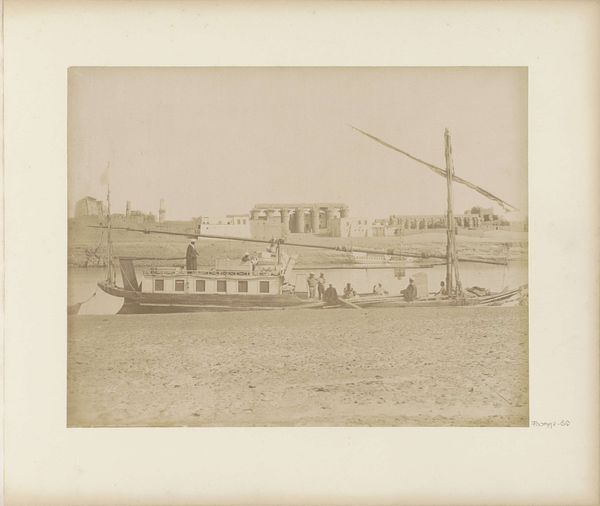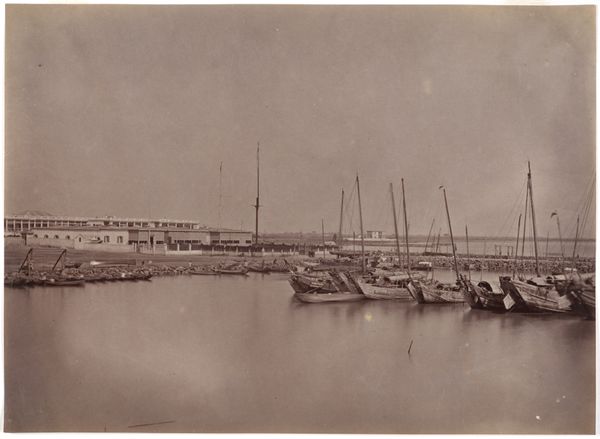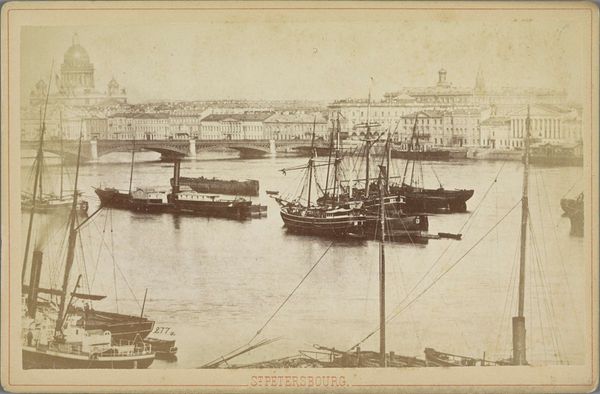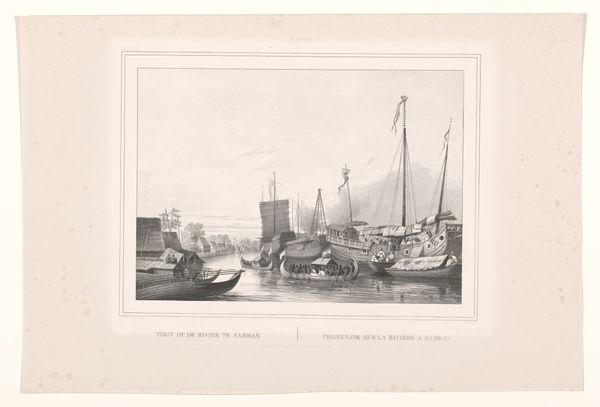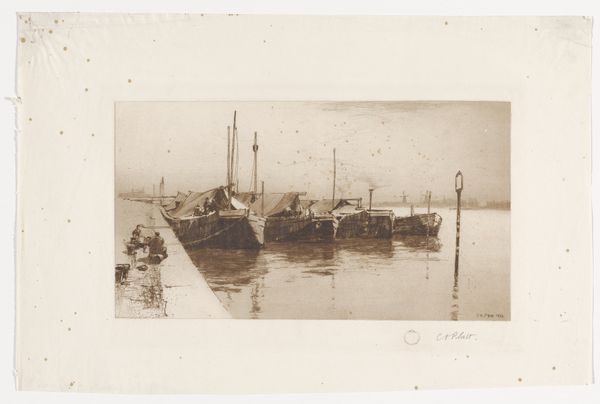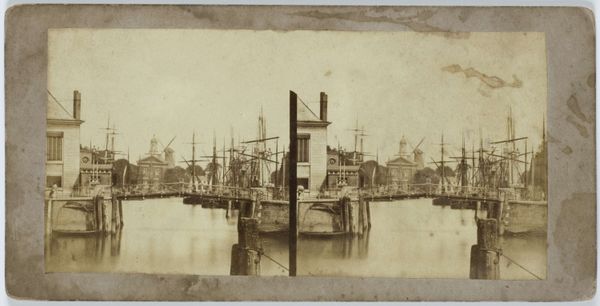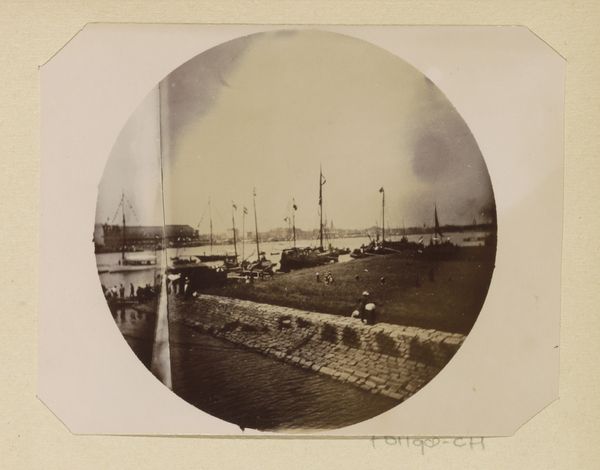
Oosterdok met oorlogsschepen, gezien vanaf het Meteorologisch Instituut aan de kop van de Oostelijke Handelskade, Amsterdam before 1894
0:00
0:00
print, photography
#
print photography
# print
#
landscape
#
photography
#
cityscape
Dimensions: height 288 mm, width 479 mm, height 484 mm, width 642 mm
Copyright: Rijks Museum: Open Domain
Curator: This compelling print photograph, attributed to Gerrit Hendricus Heinen, captures the Oosterdok with war ships as seen from the Meteorological Institute in Amsterdam. It's dated to before 1894. Editor: There's a very stark quality to this print, almost haunting. The monochrome palette and bird's eye view give a strong sense of industry and maybe a certain...inevitability? Curator: That's interesting. From my perspective, looking at the photograph as a material object, it tells a story about printmaking technology and its capabilities. It provides a window onto the shipbuilding industry and naval power of the era. These warships signify not just military strength, but the socio-economic engine that drove their construction: the factories, the labor... Editor: Of course. And beyond the immediate industrial landscape, consider these ships as symbols. The silhouettes are austere, powerful and vaguely menacing against the calm waters of the Oosterdok. There’s a strong visual language here linked to nationalism and possibly colonial ambitions. One senses the weight of expectation resting on these vessels. Curator: Perhaps, but I also think it shows a snapshot of urban planning. The harbor's infrastructure – cranes, warehouses, train lines— reveals the complexity of coordinating industry, transport, and trade. What seems most fascinating to me is seeing Amsterdam transform through industrial materials in contrast with organic natural forms. Editor: Yes, but consider also, isn’t that juxtaposition carefully curated? It reinforces the might of human ambition—that man can not only tame the elements, but dominate other men using these floating war machines. The image is about power and control made concrete. It reflects specific attitudes, fears, and desires rooted in late 19th-century Europe. Curator: It's the tangible traces that ground my interest – the wear on the printing plates, the chemical process of photographic development. To understand it fully we must keep digging, questioning assumptions about the role and labor of producing it. Editor: Precisely—unearthing the sediment of cultural beliefs and power structures. Ultimately, it all swirls together in a potent, visually arresting image of a pivotal historical moment.
Comments
No comments
Be the first to comment and join the conversation on the ultimate creative platform.


